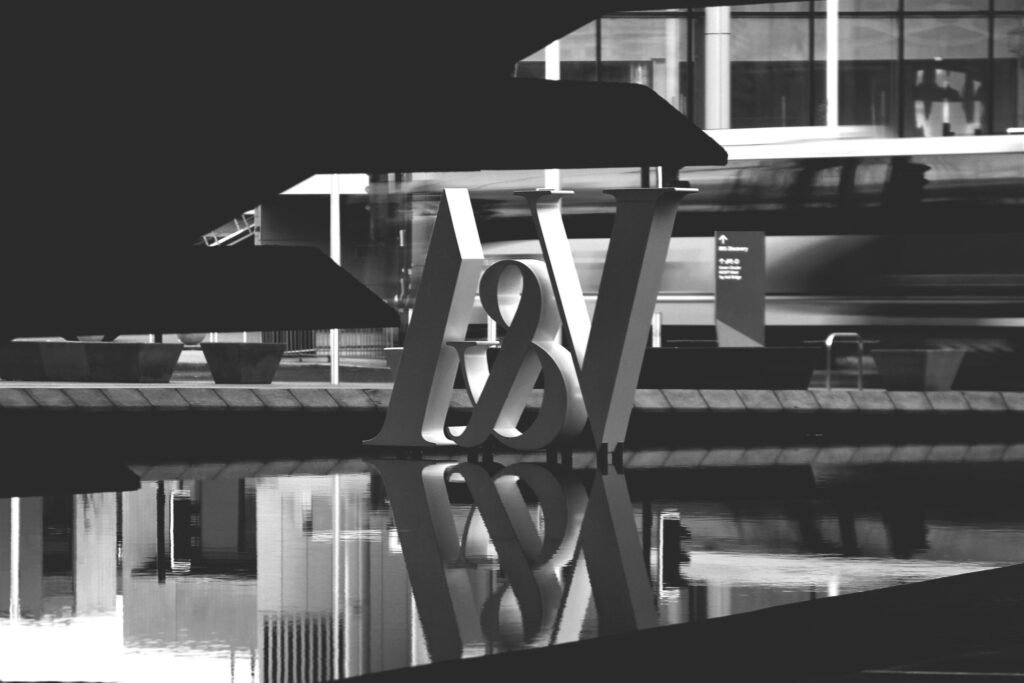Introduction
Reflections hold a kind of quiet magic in photography. They duplicate, distort, and disguise reality, offering a window into a parallel world. In monochrome photography, reflections take on an even more abstract, poetic quality. Without the distraction of colour, the interplay between real and reflected elements becomes sharper, moodier, and more surreal. Capturing reflections in black and white invites us to look twice—and then again.
1. Why Reflections Work So Well in Monochrome
Monochrome photography thrives on contrast, texture, and composition—elements that reflections naturally enhance. Reflections flatten the depth of a scene, creating layers within a single plane. In black and white, this layering becomes more pronounced and dreamlike, allowing photographers to bend visual logic and explore symmetry, balance, and illusion.
Bonus: Reflections can give even mundane subjects a cinematic, mysterious quality when rendered in high-contrast black and white.
2. Sources of Reflection to Explore
You don’t need a mirror to find a compelling reflection. Every day, surfaces can offer striking opportunities:
Water: Lakes, puddles, rain-soaked streets, and fountains. Even rippled or murky water adds character.
Glass & Windows: Storefronts, cars, high-rises—especially when light hits at just the right angle.
Metal & Chrome: Think vintage cars, railings, or industrial objects with a polished surface.
Shadows as Reflections: While not literal, shadows mimic and echo forms, and can act like abstract reflections in their own right.
Photographer’s Tip: After a rainstorm is one of the best times to shoot—urban streets are transformed into reflective canvases.
3. Composition Techniques
When shooting reflections in black and white, consider these compositional tricks:
Symmetry & Balance: Use reflections to create near-perfect symmetry, then disrupt it with a subtle imperfection to draw the eye.
Flip the Frame: Rotate your image so the reflection appears right-side-up. This plays with perception and adds intrigue.
Layered Depth: Position a subject in front of a reflective surface, capturing both their form and their ghostly double.
Abstract Forms: Look for broken or wavy reflections that obscure the source—creating surreal, impressionistic imagery.
4. Light and Contrast Are Everything
In monochrome, light becomes your paintbrush. Look for scenes with a strong light source to create high-contrast reflections. Early morning and late afternoon (golden hours) produce directional light that enhances texture and clarity, while harsh midday sun creates deeper shadows and starker contrasts.
Pro Tip: Reflections often work best with some level of shadow. Too even light may flatten the image. Use the light-shadow interplay to define shape and add emotional weight.
5. Post-Processing to Enhance Reflections
Monochrome images come to life in post-production. Here’s a basic workflow to elevate your reflective shots:
Convert to B&W: Use manual sliders to control how different colour channels convert into shades of grey.
Increase Contrast: Reflections often look better when there’s a clear difference between the real and the reflected.
Dodge & Burn: Brighten key elements in the reflection, or darken the edges to frame the subject.
Clarity & Texture: Boost clarity to bring out ripple details, window streaks, or rain textures.
Crop & Flip: Experiment with orientation or tight crops to abstract the reflection even further.
6. Reflections as Metaphor
In monochrome photography, reflections aren’t just visual tricks—they can be emotional devices. A single figure staring into a puddle may evoke introspection, melancholy, or solitude. A distorted skyline might suggest memory, nostalgia, or change. Black and white strips reflections down to their essence, allowing symbolism to rise to the surface.
Conclusion
Reflections in monochrome photography offer a world of visual poetry and layered meaning. They are moments where reality folds in on itself—where time feels still, yet dynamic. Whether you’re capturing the glint of a face in a window or the shimmer of a skyline in a rain puddle, remember this: in black and white, reflections aren’t just a technique—they’re a state of mind.
